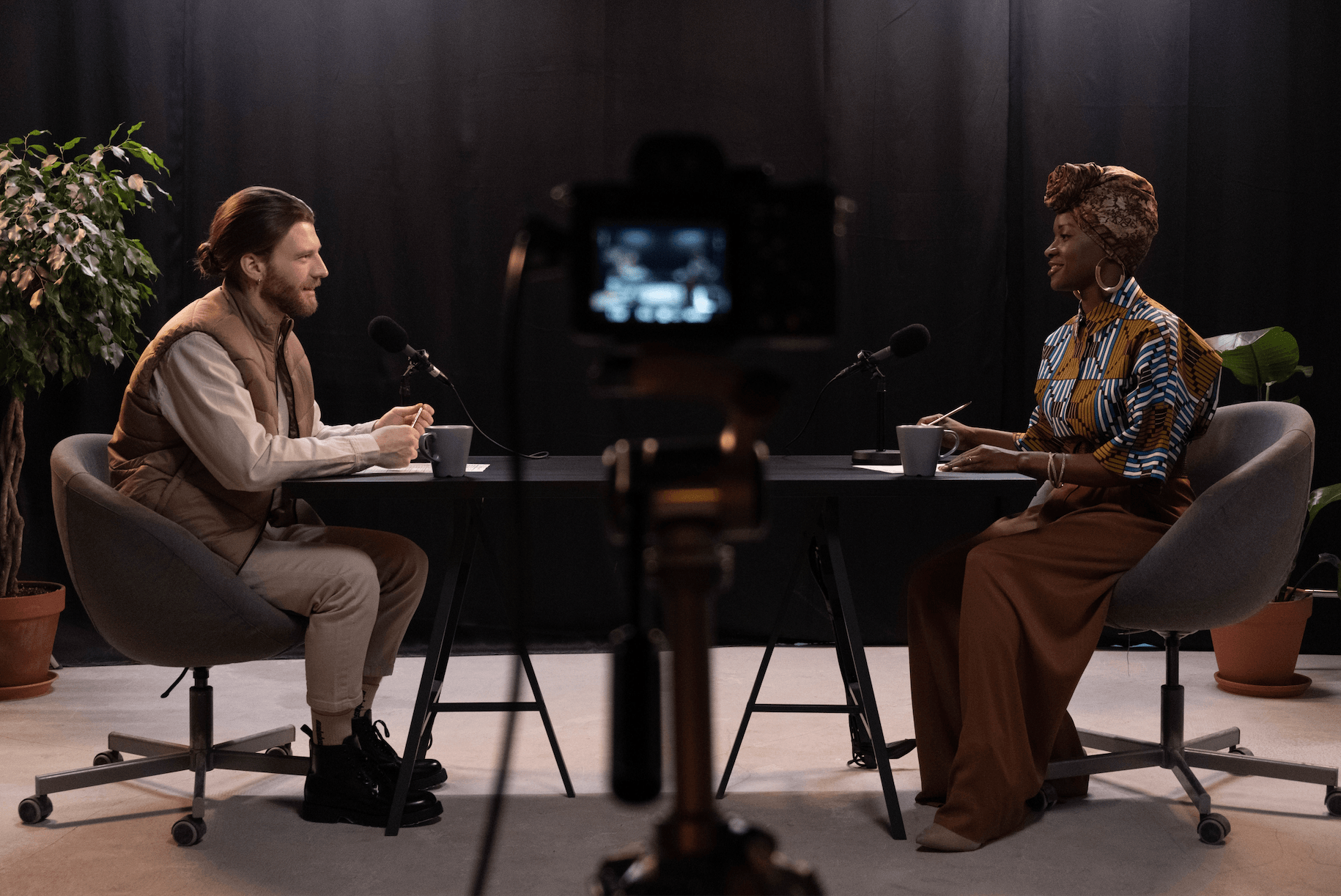The best approach to listening to someone's story is through their own words. An interview is the greatest method to link pertinent knowledge and a personal face, whether it's hearing a documentary-style recapping of events or getting an expert's view on a particular issue.
If you're preparing to film an interview, consider a few lens choices before diving into the tough questions. That kit lens isn't going to look very professional, so here are some alternatives for various situations instead.
The "Talking-Head" Style
The most basic and frequent type of interview is one or two subjects on screen. If you don't want the questioner to appear on camera, have them sit off-camera. You may stage it to seem like the interviewee is spontaneously sharing information with you without being prompted by using a little innovative editing.
This is a two-lens configuration that is frequently seen with two cameras. One wide-angle lens shows the subject in their environment, and a telephoto lens expresses emotion and conveys information on the subject's face. You also have alternatives when editing the footage later because of this technique.
Lens focal lengths and f/stops will change based on what camera system you're using. The lenses mentioned here are just ideal estimations, especially for Canon shooters, as these are often native lenses to that brand: If you're on a budget, the 35mm f/2 is the best choice for full-frame users. If not, the 35mm f/1.4 is impossible to beat for this purpose. For the closeup, use an 85mm f/1.2. This focal length and rough aperture estimations will give you pro footage in no time at all.
Multi-Subject Interviews
It's challenging to get many people in a shot, and interviewing the whole band or movie cast might quickly use up all of your frames. Fortunately, in cases like these, only one or two individuals will typically be speaking at any given moment.
Begin with the same two-camera setup described above. You might want to push your wide-angle a little more than before to contain all of those people in one shot, but the idea is the same. Include the interview subjects within the frame, ensuring everyone is clearly seen and focused.
This next step is considerably more straightforward if you have a camera operator and an interviewer. Add a little more extreme telephoto lens to your secondary closeup camera and have your camera operator keep the action moving, keeping the person who is presently speaking within the frame.
This technique can also be used with many on-screen personalities, focusing on two or three people simultaneously to avoid back and forth motion.
The Sony FE shooter could benefit from the 24mm f/1.4 GM wide-angle prime or the more affordable 28mm f/2 for a lighter, less expensive option. For closeups, consider renting a Sigma 105mm f/1.4 ART (on a tripod or monopod) or taking a few steps back with the Zeiss Batis 135mm f/2.8.
With the Interviewer in the Shot
If you want to conduct a more conversational interview, show the Interviewer on-screen. Depending on the situation, this may be more lighthearted, such as two friends chatting, or it may be significantly heavier, such as a Barbara Walters special.
In any case, you'll need two cameras for this scenario. For this purpose, I propose using two medium-length lenses. If the subject moves around a lot, an angle that is too wide may expose the cameras and lights, while an angle that is too close may lose sight of the subject when they speak.
If you're a Nikon lover, get the adapted Nikkor 50mm f/1.8 Series E AIS or the 35mm f/1.4 G for a balanced appearance that isn't too distant and not too near.
One Camera Setups
For single-camera shoots, a wider standard lens is best. Closeups are effective for intensity, but if you're interviewing someone who leans forward or shifts around in their chair, you'll have trouble seeing their hands. It would be a shame to miss someone's massive, passionate hand movements, so I recommend using a lens that isn't too punched.
The XF 23mm f/2 R and the 35mm f/1.4 R are ideal for Fujifilm shooters. Both offer a typical perspective, far from either end of the spectrum. With their lightweight and compact execution, Fujifilm's tiny prime lenses are a pleasure to use and ideal for general interview recording.
We hope these situation outlines and lens recommendations help you to feel more confident the next time you're filming an interview. Just remember, the humanity behind the words makes interviews so intense to watch. Pick the right lens – given the subject – that helps to see beyond the answers to a series of questions. Once you do that, you're elevating your video work to the next level.
Related article: Tips for Filming at Night
Related article: YouTube Tips for Beginners
Related article: The Best Tips for Shooting Music Videos
Related article: How to Record a Podcast in 2022












